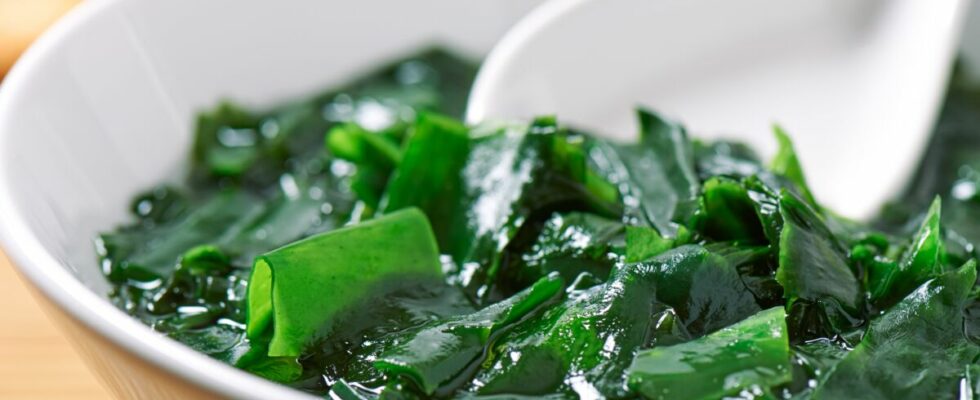A pillar of Japanese cuisine, kombu seaweed has been consumed in Asia for centuries. It notably gives its taste to dashi, this clear broth served at the start of the meal in Japan. It is the most iodized of the algae with this particularity: it is also discreetly sweet. Its large, flat, crunchy and fleshy vines can reach up to 4 meters long, hence its other names: Neptune’s belt (or baldric).
Kombu, an algae full of vitamins
There are 2 types of kombu. We distinguish brown kombuwhich is collected in the wild from February to April and royal kombu, deep green-brown which is grown in the open sea on long seeded ropes. Japan is the main world exporter of both varieties but French production of royal kombu is developing in Brittany, in Finistère, with notable success. With only 43 kcal/100 g, kombu seaweed is an unexpected source of benefits. It provides a whole cocktail of vitamins, proteins and minerals which give it a relaxing, digestive and slimming action. Its very high iodine content, however, means that it must be consumed with caution if you suffer from thyroid disease.
How to cook kombu?
In cooking, kombu has more than one virtue. It speeds up the cooking of legumes (beans, chickpeas, lentils, etc.) and makes them more digestible. Above all, he has no equal for enhance the flavor of other foods. Thanks to the glutamic acid it contains in large proportions, it brings flavor to broths, pastas, rice, meats and of course, fish. It gives dishes what the Japanese call “umami”. This fifth indefinable taste is neither sweet, nor salty, nor sour, nor bitter but it melts with pleasure the most demanding palates, here and in the Far East.
For further
Integrating algae into your daily diet remains the best way to benefit from their tremendous health benefits. You still have to learn how to cook them. Written by a chef passionate about marine harvests, this book brings together 80 original recipes to get started with varieties that are easy to find. We discover that kombu royal can be used to make all kinds of simple and delicious dishes: from rice pilaf to cauliflower cream and stuffed tomatoes.
Long live algae!, Hugo Morel, ed. Too Mad!, €25
